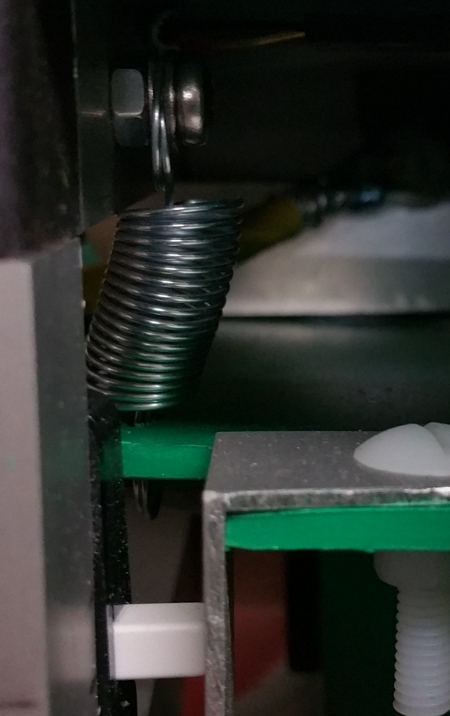Hello
To keep a correct stifness of the spring I block head and foot of the spring with screw and bolt or by inserting in plastic, so it cannot rotate around the fixing point. This way there is no dead zone where it move freely and doesn't always come back to the same place.
To get a correct braking of the mow blades, I change the 2 single mosFet drivers for 2 full H-briges 6201P (from the shop). Now the blades are stopped in less than 2 seconds. And as predicted by Werner, it reduces the consumption ( by ~25% ).

I also had to modify the 24V supply cabling for the brakes to work correctly when emergency button is pushed. In fact to get an efficient bracking, the command of the driver must be kept up. So now, after the 24 V main switch I have 2 lines, one going directly to the pcb and a second one, cut by the emergency pushbutton, supplying only the 2 protection boards and from there the power side of all 4 drivers. The voltage of this 2nd line, measured after the emergency push button, is compared to the 1st line voltage. If both are not roughly equal, which mean the emergency button was pushed, the emergency stop sequence is lauched : keep enable pin high, set both dir pin and pwm pin equal (either both high or both low, depending on the direction). And after 2,5 seconds to be sure the motors are completely stopped, the enable pins are lowered. This avoids the motors to start alone if the push button is released.

The same emergency stop sequence is used if a lift-up is detected by the gyrometer or by the accelerometer.
In a garden without obstacle but small children, this sequence could also be lauched when bumpers are hit.
In the hope it can help to avoid some accident :S
Jacques
Attachment:
https://forum.ardumower.de/data/media/kunena/attachments/2809/BumperSpring1.jpg/


